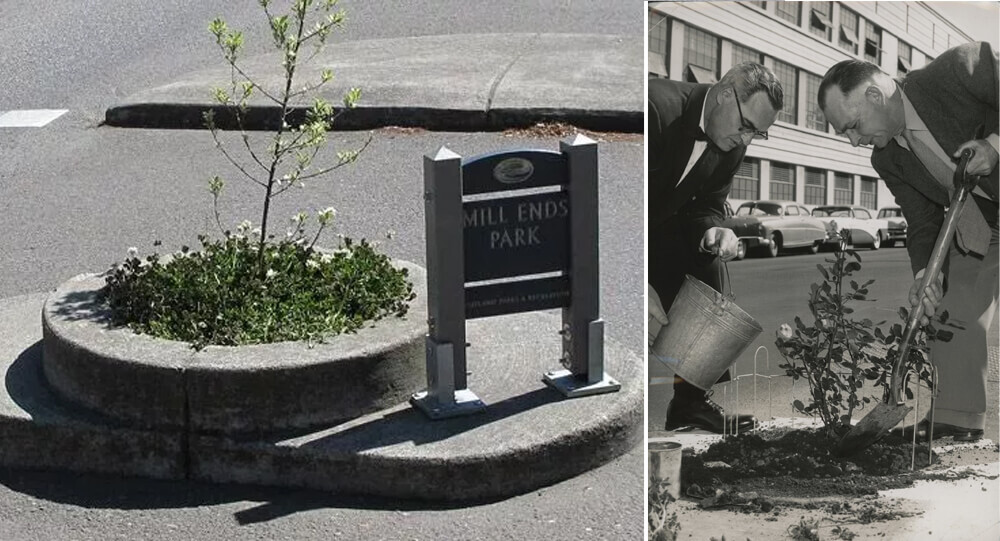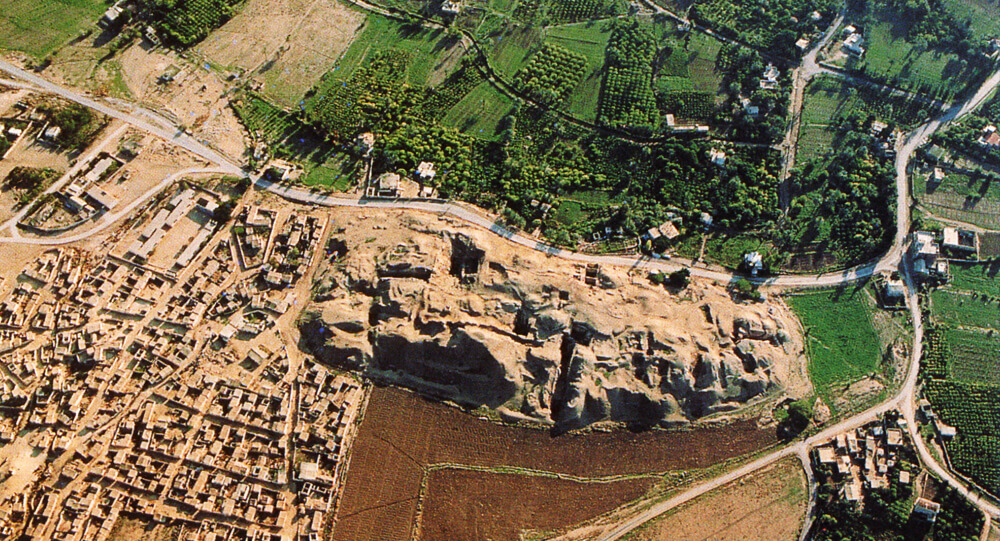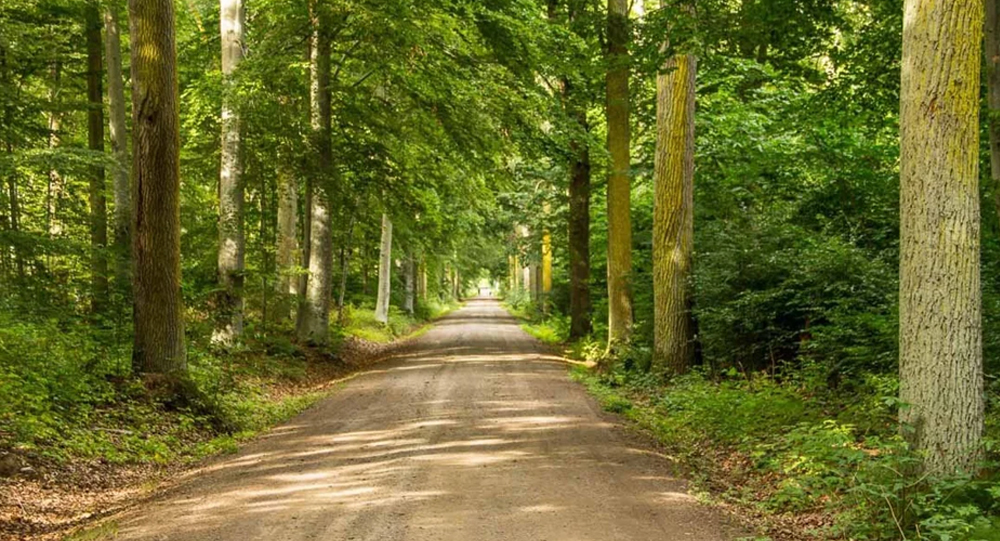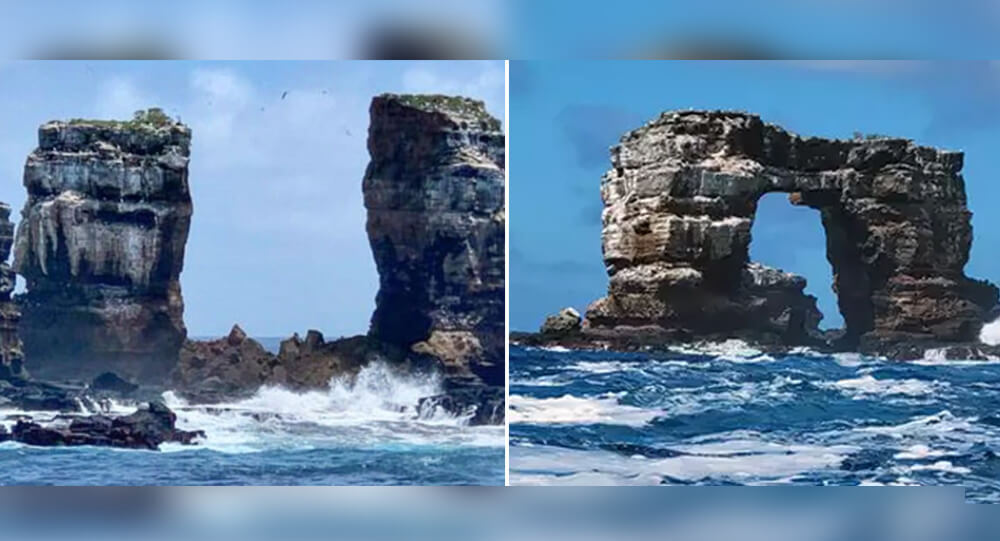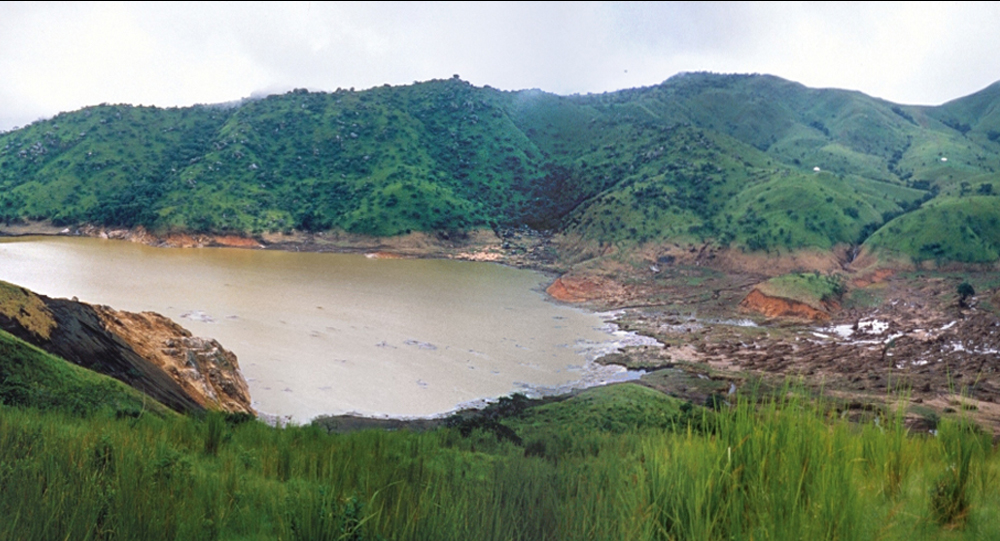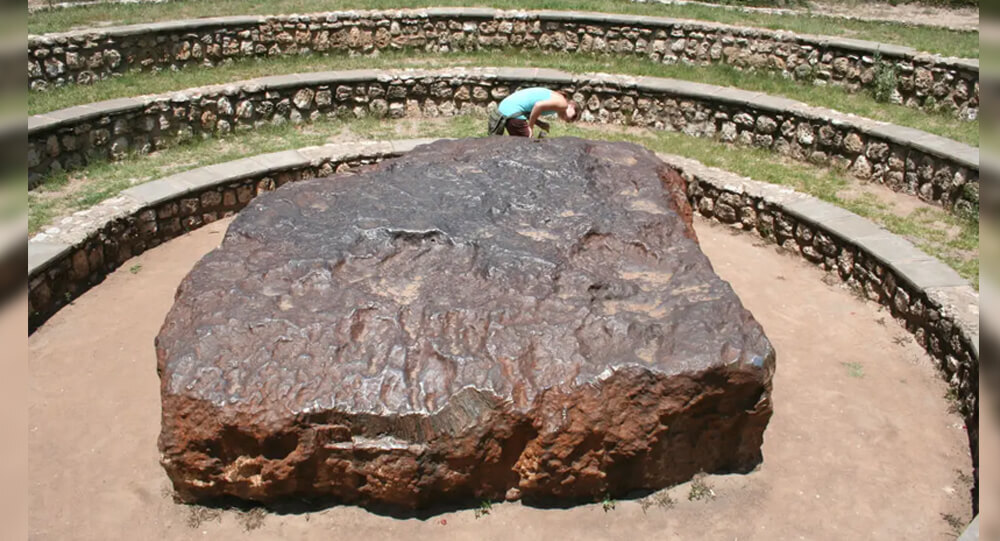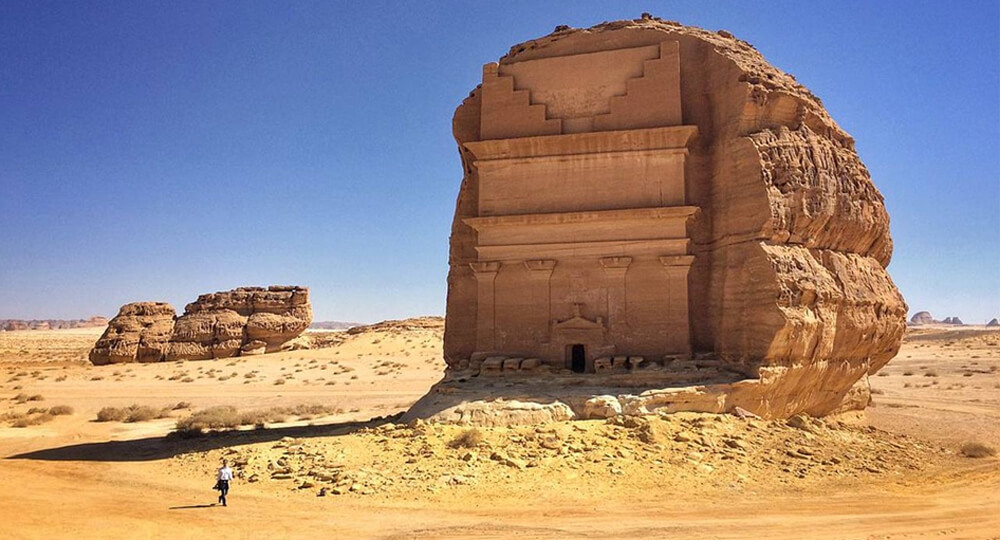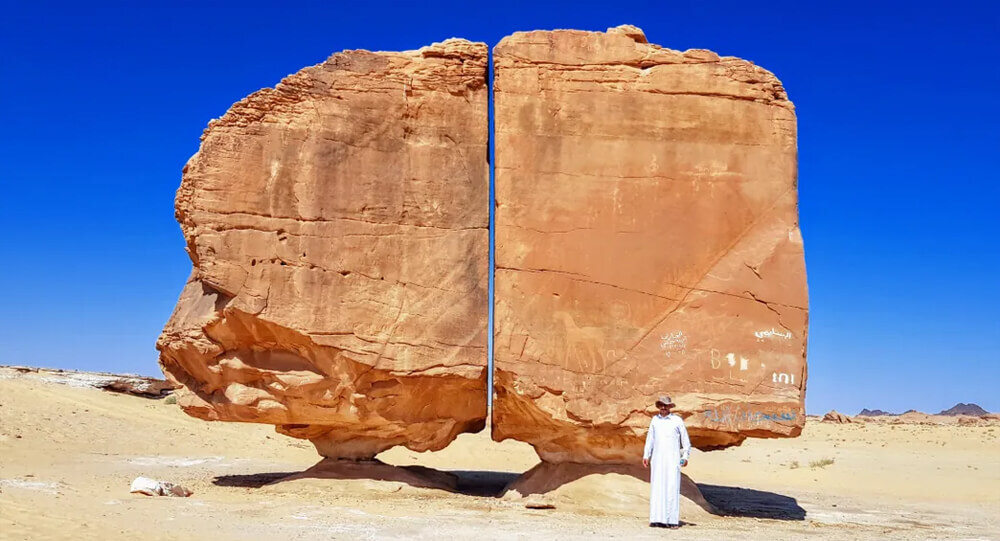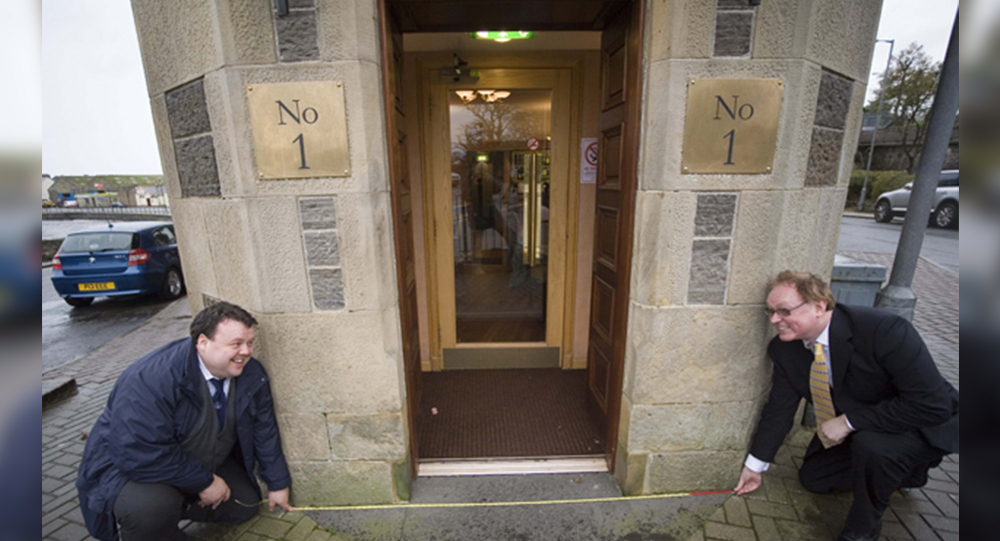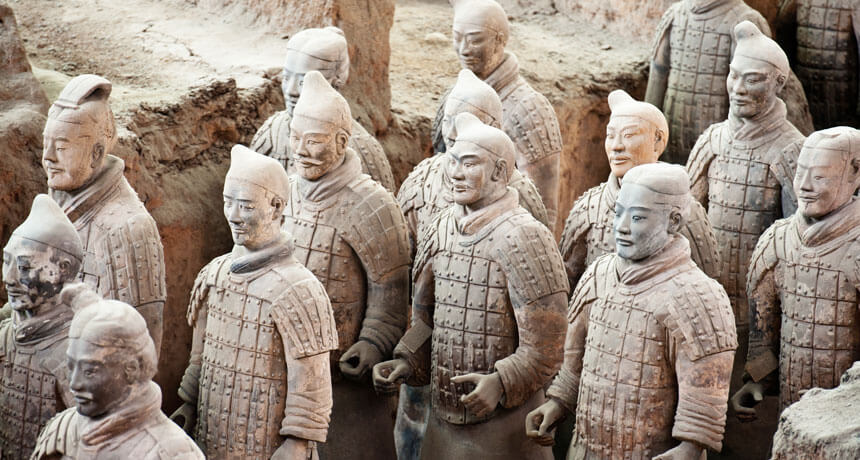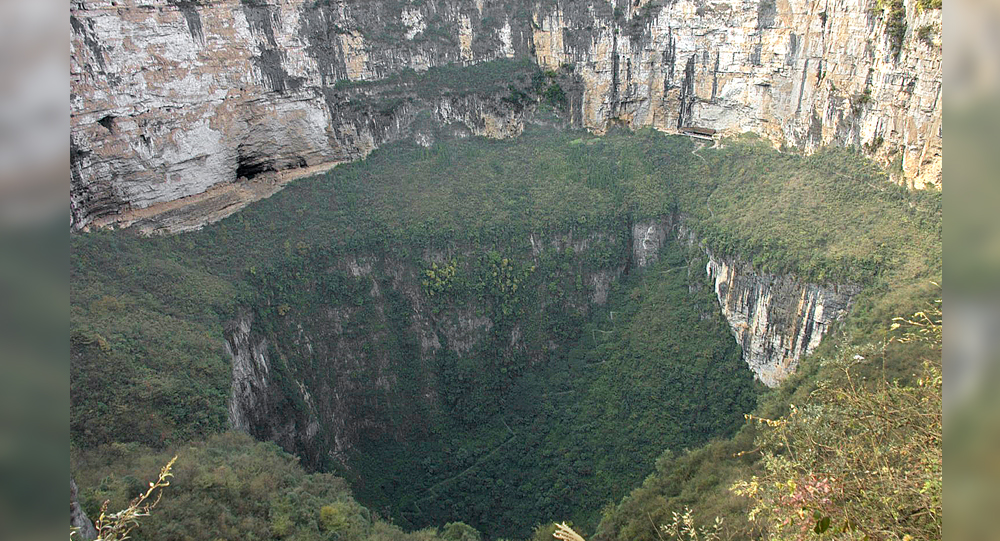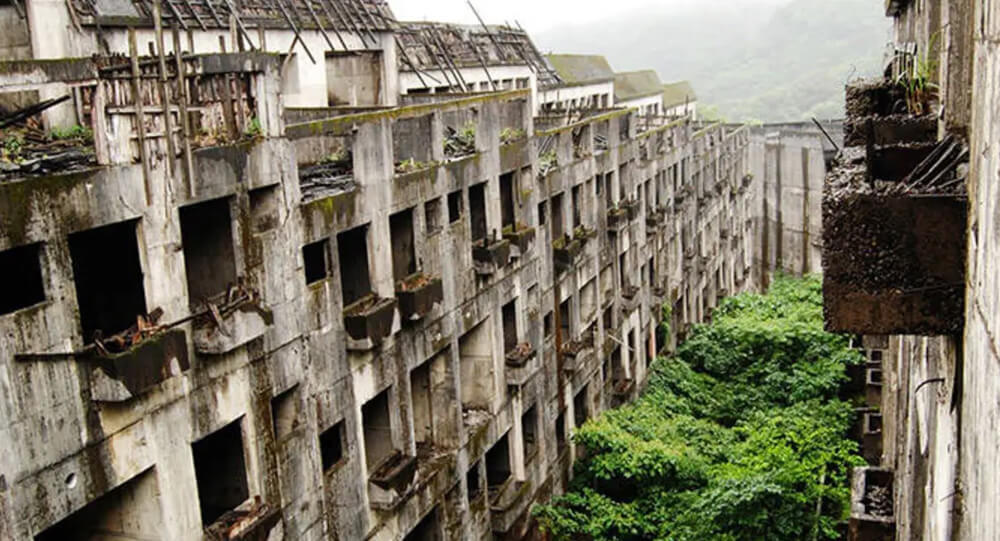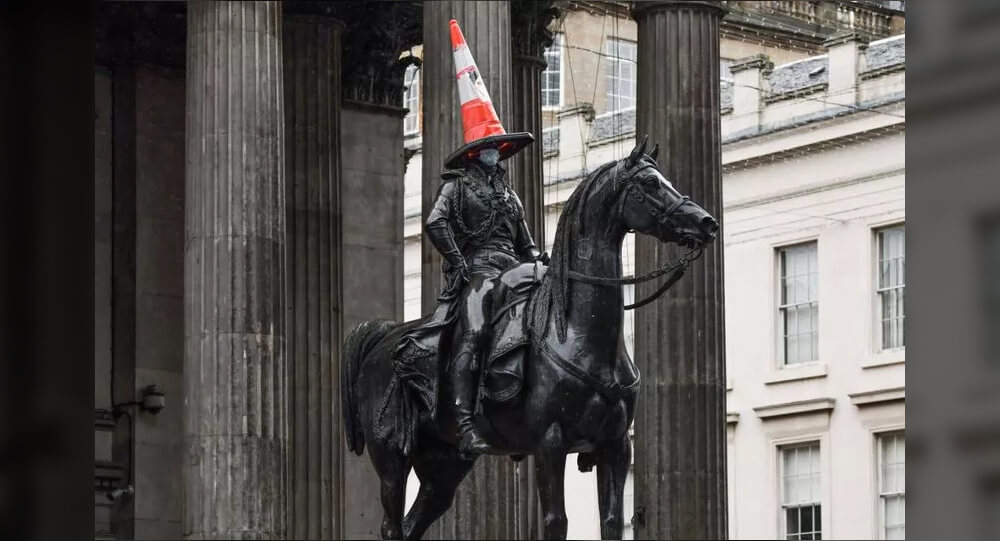

The story behind Glasgow's iconic Duke of Wellington statue and its well-known traffic cone hat
The sight of a stately statue of the Duke of Wellington and his horse, poised atop a plinth in the center of Glasgow, is among the most iconic images of the city. Its most notable feature is the modest orange traffic cone perched firmly atop Wellington’s head. As a brilliant example of the city’s ability (and pride) at not taking itself too seriously, it has now been used on everything from artwork and posters to tea towels and gin bottles.
Glaswegians particularly take pride in seeing the cone on Sir Arthur Wellesley’s bronze head, and it is practically frowned upon to view the statue without one. It is a beloved component of the city’s cultural identity.
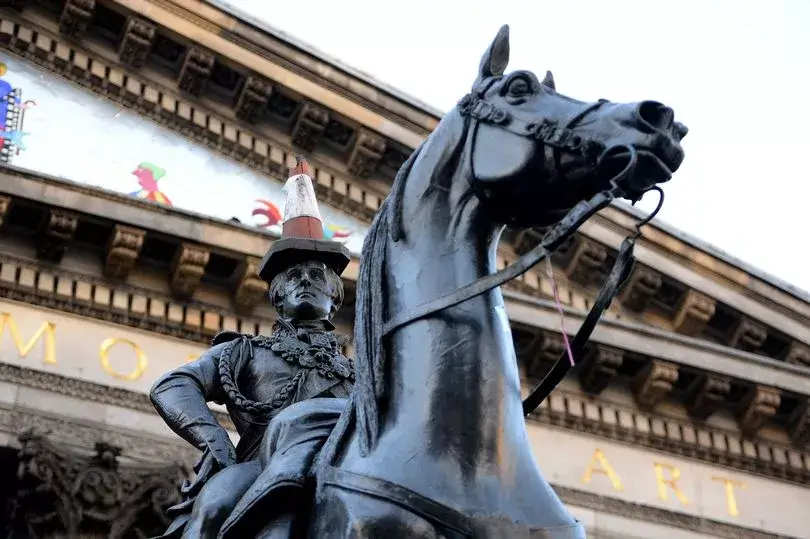
The pride in this harmless act of irreverence, however, can often seem perplexing to outsiders, but it actually provides important context for understanding both the city and its inhabitants.
The Duke of Wellington Statue’s History
The bronze statue of the renowned military strategist and former prime minister, who assisted in defeating Napoleon at the Battle of Waterloo, was erected in 1844 in the middle of Royal Exchange Square. Carlo Marochetti, an Italian sculptor, created the structure in which Sir Arthur sits proudly atop his horse Copenhagen.
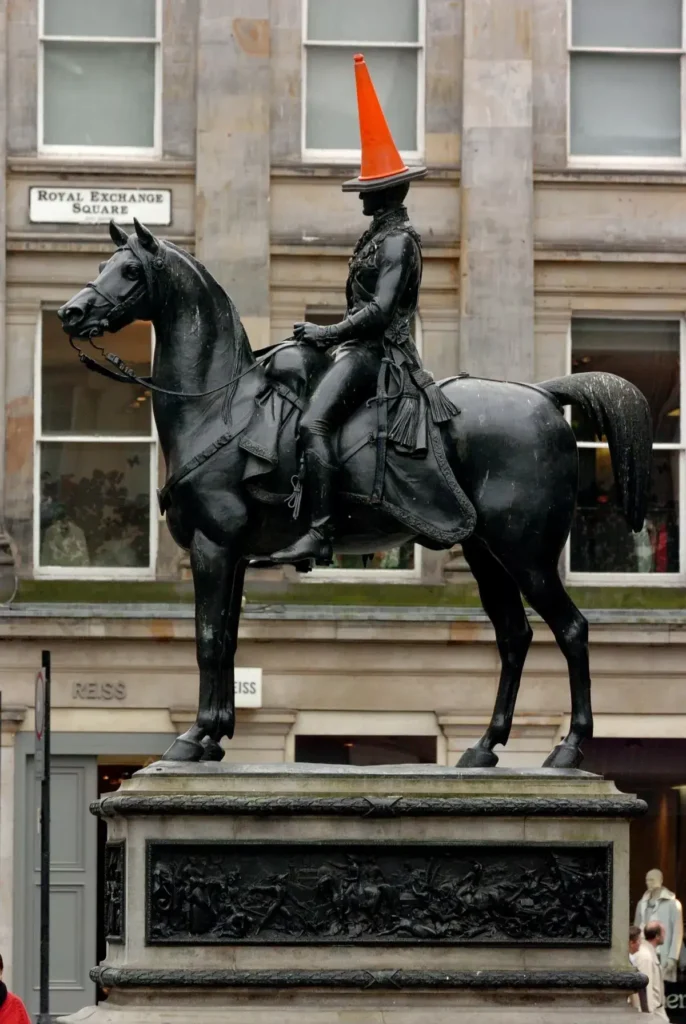
It was established to commemorate the conclusion of the Napoleonic Wars in what was then regarded as the second-biggest city in the British Empire.
The well-known cone
It is generally accepted that inebriated partygoers or prankish students started scaling the 21-foot-tall monument in the 1980s in an attempt to place a bright orange cone atop the Duke’s head.
Cones inexplicably reappeared after being removed during the day by city council employees, turning the practice into a ritual.
Cones would occasionally be placed on Copenhagen’s head or ears as well; on other occasions, Sir Arthur would have several cones placed on his head (some images on the internet show this number rising to ten or more).
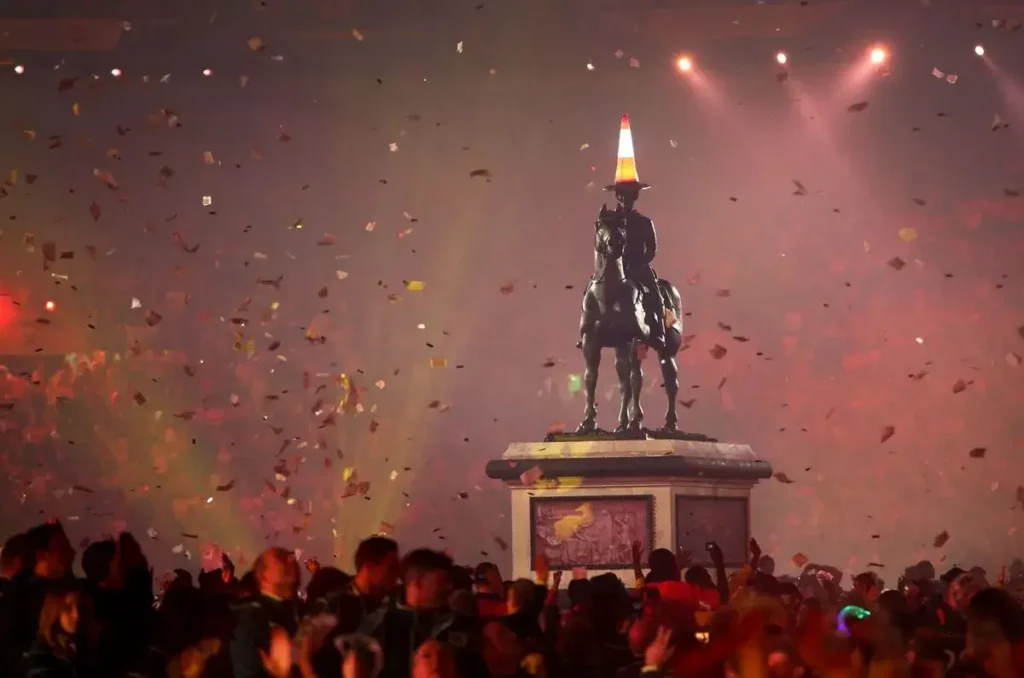
Thereafter, there was conflict between the local government and the populace, who interpreted the cone as a representation of the city’s lightheartedness and refusal to take itself or well-known historical figures too seriously.
Referred to as “a minor act of vandalism” by some provosts and senior council members of the city, the cone is a source of pride for others who claim it is Glasgow’s “greatest selling point” and a symbol of its humor.
The removal of the cone by council employees has frequently been justified as a safety measure for both individuals attempting to climb the statue and anyone passing by below in case the cone falls from the statue’s head and causes serious harm. Additionally, they claim that it is for the statue’s protection, since over time, individuals have attempted to scale the building outside the Gallery of Modern Art, causing it to lose half of its sword and its spurs.
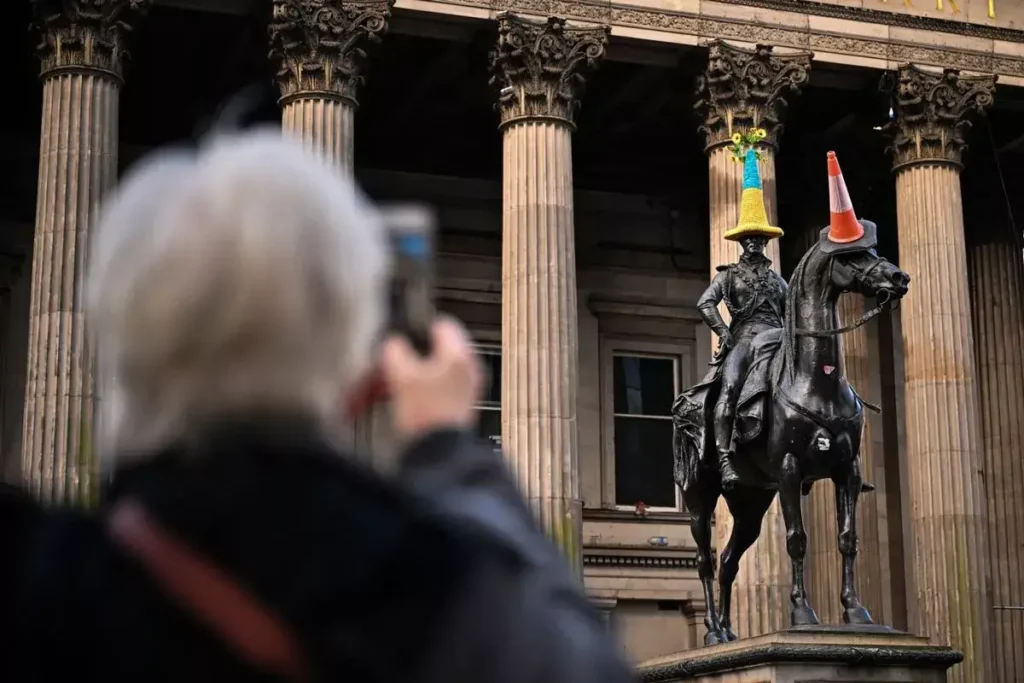
Even plans to raise the plinth of the statue in order to stop the “cone-ing” were considered by Glasgow City Council in 2013, but they were eventually withdrawn due to strong public opposition.
These days, it’s so uncommon to see the statue without its iconic cone that people are actually taken aback when they do.
Its fun, countercultural appeal is further enhanced by the fact that Lonely Planet once included it in their list of the “Top 10 Most Bizarre Monuments On Earth” due to its iconic status.
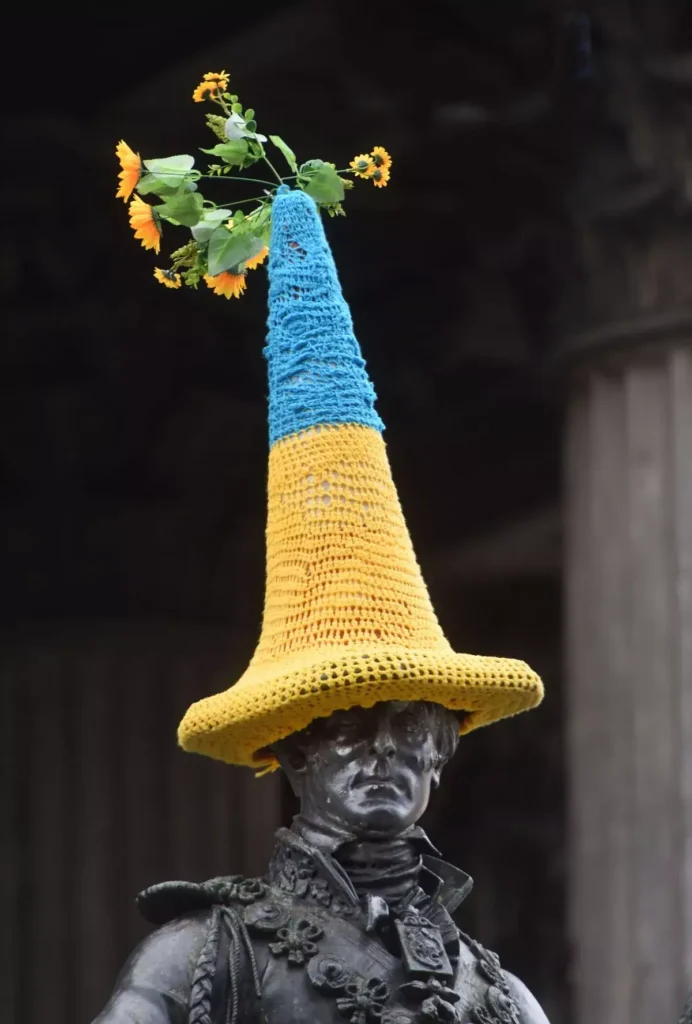
The people who manage the Keep the Cone Facebook page continue to post content on it in case there is another “act of madness.” Glasgow City Council’s public relations officer, Paul Kane, stated to Mental Floss in 2017 that there wasn’t much more to say about the topic because so many people had strong opinions that conflicted with one another.
The statue, along with the Rocky Balboa statue in Serbia and the Washington National Cathedral, was listed in the top 10 most bizarre monuments on Earth by the Lonely Planet guide in 2011.
You May Also Be Interested In…
- 11 Moments That Caught Exactly Before Tragedy Happened
- In Pakistan, This Banyan Tree Has Been Arrested Since 1898
- Mill Ends Park, The Smallest Park In The World
Subsequently, the traffic cone has undergone alterations to symbolize Glasgow Pride, was featured in the opening of the 2014 Commonwealth Games, and most recently, has taken on a blue and yellow appearance to demonstrate support for Ukraine.

Mill Ends Park, the Smallest Park in the World
Portland, Oregon is home to the tiniest park in the world, a two-foot-diameter circle. Mill End Park is the name of this park.

Ancient Jericho: The First Walled City In History
The ancient city of Jericho is the world's oldest walled city, with evidence of stone fortifications dating back nearly 9000 years.

Grüner See, The Park That Turns Into A Giant Lake Naturally
There is a place in Austria called Grüner See which is a dry park in winter and turns into a 12-meter-deep lake in summer.

How Sweden’s 300,000 Oak Trees Became an Unintended Legacy: The Naval Forest That Outlived Wooden Warships
In the 1830s, Sweden planted 300,000 oak trees for the purpose of building naval ships. However, by the time the trees matured, metal warships had replaced the need for wooden ones. The forest still stands to this day.

Darwin's Arch collapse
According to news sources, the top of Darwin's Arch, a famous natural stone archway in the northern Galapagos Islands, has collapsed into the waves.

The Lake That Explodes: The Deadly Mystery of Africa’s Silent Killer
Did you know some lakes can kill without warning? Lake Nyos in Cameroon once erupted with invisible carbon dioxide, suffocating 1,700 people in minutes. These rare “exploding lakes” silently build pressure, turning still waters into deadly, unseen assassins.

Top 6 Largest Meteorites Ever Found on Earth
When space meteorites hurtle towards Earth, they frequently burn up in the atmosphere before reaching us. Those that burn up become meteors - or shooting stars.

What is secret behind the Australia’s mysterious pink lake?
Lake Hillier in Australia maintains a bright pink hue all year round. Although no one knows for sure what causes the unique coloring, experts speculate that it might be the result of high salinity, a pink bacteria called “halobacteria,” and a salt-loving algae species called Dunaliella salina.

How Migratory Birds Navigate Thousands of Miles Without Getting Lost
Migratory birds undertake epic journeys spanning thousands of miles with astonishing precision, never losing their way. Their secret lies in a remarkable blend of innate senses, learned experience, and sophisticated navigation tools—ranging from the Earth's magnetic field to celestial clues and mental maps. Explore how these feathered travelers accomplish one of nature's most astounding feats through science, intuition, and adaptation.

The mysterious GIANT spherical stones
Mysterious spherical stones ranging in size from a few millimeters to several meters have been discovered in Crimea, United States, Russia, and New Zealand. There are many theories from various geologists, but none of them are clear.

9 countries at risk of disappearing due to climate change
Although global warming is a serious threat to the entire planet, some geographical regions are more vulnerable to its effects.

Qasr al-Farid, the Lonely Castle of the Nabataeans
The remote tomb of Qasr al-Farid, situated in the Saudi Arabian desert, dates back to the 1st Century CE. It was built by the Nabataean people, who also built Petra in Jordan. This site has remained largely undisturbed.

Top 10 Mysterious And Least Explored Places On Earth
Some people believe that there is nothing unexplored remaining on earth but the world doesn't cease to surprise us with its mysteries. Today I'll tell you about the lost places of the planet and animals that live only there.

Why Londoners Celebrate No Trousers Day by Riding the Metro Without Pants
Every year, Londoners participate in a quirky and joyful tradition known as No Trousers Day, where brave commuters board the London Underground dressed normally but without trousers, pants, or pajamas from the waist down. This cheeky event brings laughter, surprises, and a shared sense of community to the usually dull winter commute, reflecting a playful rebellion against the mundane and a celebration of spontaneity. Discover the origins, spirit, and fun behind London’s beloved No Trousers Tube Ride.

This soon-to-be-closed train station in Japan only serves one passenger
Japan keeps a defunc train station operational in 2015 for the sole purpose of allowing one girl to go to school every day. Only two stops are made by the train: once when an only one high school student departs for school and once when she returns.

How Were the Two Parts of the Al Naslaa Rock Formation Created?
Scientists have been puzzled by the Al Naslaa rock formation in Saudi Arabia for a long time, and there is still no explanation for why this boulder appears to have a precise incision across the middle of it.

The Tiny Street in Scotland That Holds the Record as the World’s Shortest
Nestled in the northern Scottish town of Wick, Ebenezer Place may be small, but it packs a world record punch. Measuring only 6 feet 9 inches (2.06 meters) long and boasting just a single address—the front door of Mackay’s Hotel—this narrow street has earned its place in the Guinness Book of World Records as the shortest street on the planet. Officially declared a street in 1887, Ebenezer Place delights visitors with its quirky charm and unique history that highlights how even the tiniest places can capture global attention.

Top 10 Greatest and shocking Archaeological Discoveries of All Time
While we're all locked at home, there's no better way to escape to another time and place than to learn about amazing archeological sites and discoveries from around the world. Here are the 10 greatest and shocking archaeological discoveries —and don't be shocked if they inspire future trip plans whenever it's safe to do so again.

Xiaozhai Tiankeng: Exploring the World’s Deepest and Largest Natural Sinkhole
Hidden in the rugged terrain of Chongqing, China, lies Xiaozhai Tiankeng—the world’s deepest and largest natural sinkhole. Known as the “Heavenly Pit,” this colossal natural wonder plunges between 511 and 662 meters deep and stretches over 600 meters wide, dwarfing many familiar landmarks. This article journeys into the geological origins, unique ecosystem, and mysterious caverns beneath Xiaozhai Tiankeng, revealing a spectacular glimpse into Earth’s hidden landscapes.

The unusual ability of 'sea nomads' to hold breath is due to one major organ
The Bajau are a group of people that practice extreme free diving, submerging for up to 13 minutes at depths of about 200 feet. These ‘sea nomads’ dive to catch fish or look for natural materials that can be used in crafts in the waters that surround the Philippines, Malaysia, and Indonesia.

The Unique Grana Double Tree of Piedmont, Italy
The “Grana Double Tree” in Piedmont, Italy is a highly unusual tree, which consists of a cherry tree growing atop a mulberry tree. It is essentially a two-species, two-tiered hybrid duplex.

Famous abandoned cities and ghost towns in the world
Learn the stories behind seven of the world's most renowned abandoned cities and villages, from the infamous Chernobyl nuclear catastrophe zone to Hashima Island.

Mystery SOLVED: blood Rain in India
The dissemination of spores of microalgae has been identified as the origin of the 'Blood Rain' phenomena, according to a new study by Indian and Austrian experts. Since 1896, reports of intermittent red-colored rain in portions of Kerala and Sri Lanka have been coming in. The most recent one occurred in 2013 over Kerala.

The Mystical Money Tree of the Scottish Highlands: A 1,700-Year-Old Tradition
In the Peak District Forest of the Scottish Highlands in the UK, there is a unique tree which is laden with only money. This tree laden with money has been studded with British coins for 1700 years, there is no corner of its trunk where a British coin is not stuck.

The Benefits of Forest Bathing and Why It’s Gaining Popularity Worldwide
Forest bathing, or Shinrin-yoku, is an immersive practice of spending mindful time in natural forest environments, and it’s rapidly gaining global popularity due to its proven health benefits. From reducing stress and lowering blood pressure to boosting immunity and enhancing mental wellness, forest bathing offers a natural and accessible way to reconnect with nature and improve overall well-being. Explore the science, sensory experience, and rising trend behind this soothing practice.
